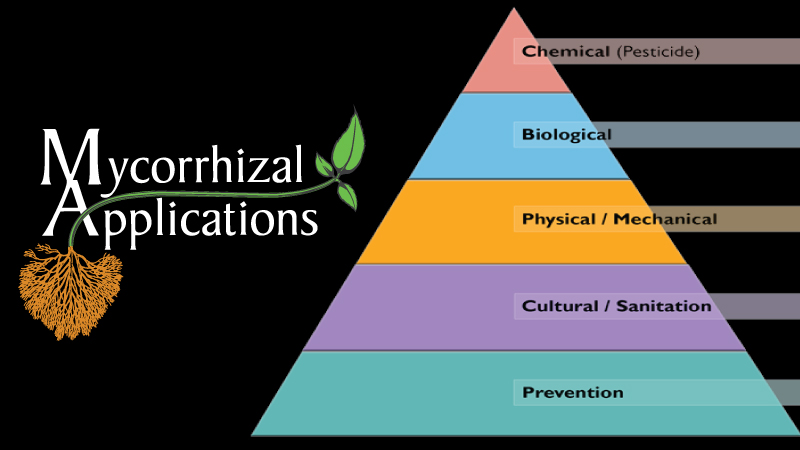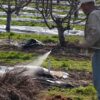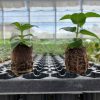Each year more and more growers are changing their growing practices to become more environmentally friendly and are utilizing safer chemicals in their greenhouses. This change is leading growers to seek out ways to develop or to improve a current Integrated Pest Management (IPM) program. These programs are designed differently for each individual grower depending on their location, pest pressures, growing media, and what plant species being grown. IPM programs require intense research and dedication to ensuring success, but the reward is knowing that they achieved success at little expense to the environment and employee health/safety.
Here at Mycorrhizal Applications, we have a full line of products designed with the environment and human health in mind. Most of the products that we manufacture and/or distribute are OMRI Listed and work great in existing IPM programs! Listed below are steps for growers to use to introduce the power of mycorrhizal fungi, botanical insecticides, biological fungicides, and biorational plant growth regulators to their Integrated Pest Management program.
Step 1: Greenhouse Clean-Up: Clean Greenhouses with MGK’s powerful Pyrethrin-based products. PyGanic Specialty is an OMRI Listed, broad-spectrum, contact insecticide that kills most pests found in a greenhouse. Sanitation is key to implementing a successful IPM strategy. *Caution* Keep in mind that if you are planning to utilize beneficial insects, Pyganic Specialty, Azera Pro, and EverGreen Pro 60-6 will kill beneficial insects, and the application should be timed accordingly. For more information on these products please see: MGK Botanical Insecticides
Step 2: Enhance Root-Mass: The addition of MycoApply mycorrhizal inoculant products to the growing protocol will help to ensure a successful IPM program. Mycorrhizae works by inoculating the roots, improving root mass, and increasing nutrient and water uptake. This process takes time and should be applied via soil incorporation or drench as early as possible. The addition of mycorrhizae will result in heartier and more vibrant plants. Plants that are strong and hearty are better suited to withstand stresses from insects, bacteria, diseases, and underwatering. Please take the time to watch our video on the benefits of mycorrhizal fungi and learn more about this amazing organism! MycoApply Video
Step 3: Prevention, not Reaction: When utilizing biorational products in an IPM program, growers must shift their thoughts from a reaction mindset to a prevention one. This is a huge key to successfully implementing an IPM program. Root and foliar diseases are very common in greenhouses and using biological fungicides like Actinovate SP as a preventative measure, will help to keep these diseases at bay. Actinovate prevents a wide variety of foliar and root diseases such as powdery mildew, Botrytis, and Pythium. Actinovate should be applied before diseases are present and can be applied many times throughout the season. Please refer to the label for specific application instructions. Actinovate SP Label
Step 4: Use of Biorational Plant Growth Regulators: For growers who want to maintain Organic products as well as growers who want to have less chemical impact on the environment, we offer ProGibb LV Plus T&O. This powerful PGR contains Gibberellic Acid and provides a variety of different benefits when applied to plants. ProGibb has been known to increase seed germination, break dormancy, delay senescence, and induce flowering, fruit set, and fruiting. Please see the ProGibb LV Plus T&O web page for more details!
Step 5: Cleansing as a Strong Finish: MGK’s insecticides can be used as a final cleaning measure! This could be for a grower who is finished for the season and wants to spray to ensure pests are less likely to be around next season or a grower who is shipping finished product to garden centers, retail box stores, direct customers, etc. With PyGanic Specialty and Azera Pro’s low REI, plants can be treated for insects the evening before being shipped. This ensures products received by customers are harboring any unwanted pests. This can also be time to say goodbye to your beneficial insects, as some customers cannot tell the difference between beneficials and pests and do not want any “bugs” on their plants.
The use of synthetic, harsh, and dangerous chemicals is no longer the only way to achieve a successful growing season. Here at Mycorrhizal Applications, we are striving to provide the best products to growers who want to reduce their environmental impact and grow more sustainably. Including our products into an IPM protocol is safe and easy. Please reach out to your Mycorrhizal Applications Sales Account Manager for more information on how you can best implement our products into your integrated pest management program!
Article by: Michael Hull
Mycorrhizal Applications – Sales Account Manager
September 4, 2020







